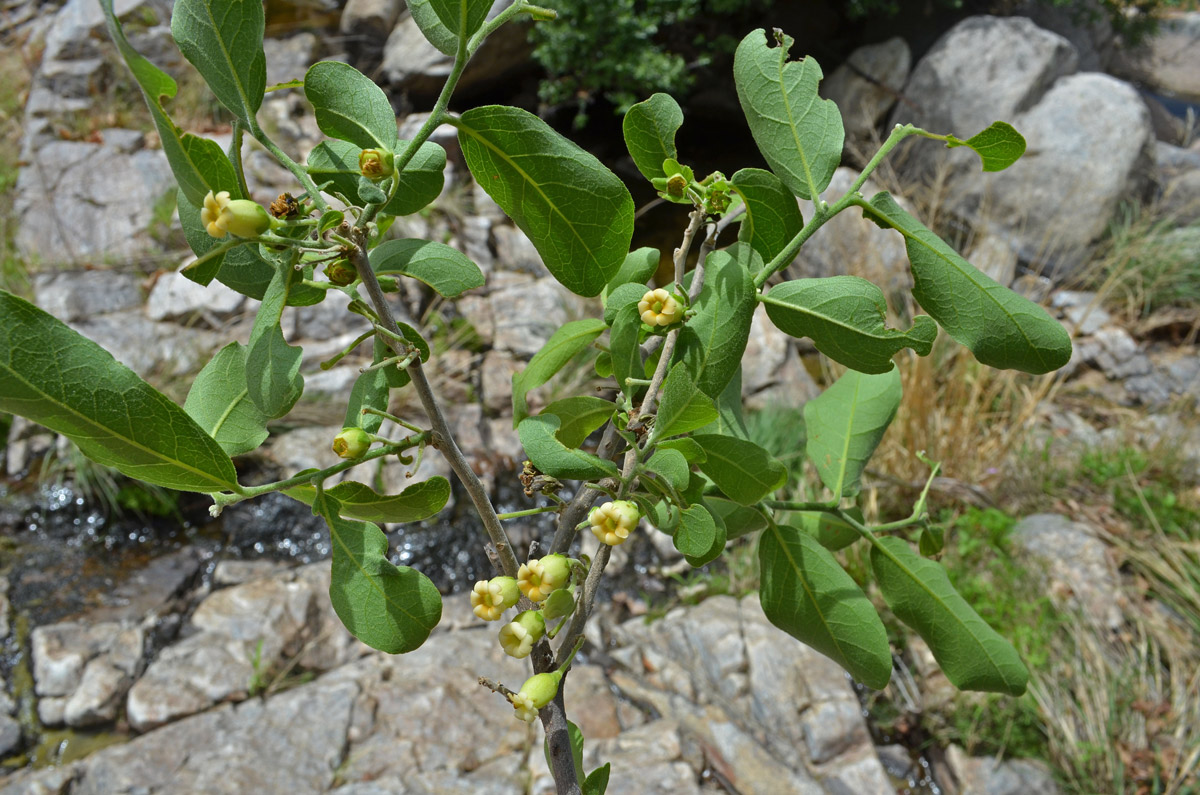
|
Family: Ebenaceae |
Shrubs or trees, usually dioecious; terminal buds absent; wood dense, hard. Leaves deciduous or persistent; petiole often glandular; blade lanceolate to broadly ovate, elliptic, or obovate, coriaceous, surfaces glabrous or pubescent, especially abaxially. Inflorescences 2-15-flowered cymes (staminate) or solitary flowers (pistillate, rarely staminate). Pedicels accrescent in fruit [or not], slender, much shorter to several times longer than flowers. Flowers: sepals persistent, often accrescent in fruit; corolla urceolate to campanulate or salverform, petals usually convolute and imbricate; staminate flowers usually smaller than pistillate flowers; stamens [6-]16(-32), paired and in [1-]2[-5] series; anthers introrse, 2-locular; ovary [3-]8[-16]-locular; ovules 1-2 per locule; styles connate proximally or to near stigmas, slender. Berries yellow, orange, red, purple, brown, or black, fleshy or fibrous. x = 15. In addition to the native species, Diospyros kaki Thunberg of eastern Asia, with orange fruits to 10 cm, is cultivated commercially in California and other southern states, and some other species are cultivated as ornamentals. Two of these have become naturalized to a limited extent in Florida. Ebony is obtained from D. ebenum and other Old World species; only the largest individuals of D. virginiana have a narrow, dark core in the heartwood. The total species count for the genus is uncertain because new species are being described and the distinctiveness of some previously described species is questionable. The complicated patterns of variation in some African species of Diospyros led F. White (1962) to coin the term ochlospecies (mob or messy species) for those that are neither monotypic nor conventionally polytypic, with variation tied to geography. The three ochlospecies that he recognized had abundant variation but not in patterns amenable to formal taxonomic recognition. Diospyros virginiana gives some hints of the same kind of variation.
Dioecious or nearly so, the pistillate fls commonly with nonfunctional stamens; fls usually 4-merous; cal deeply lobed; cor urceolate to rotate, with spreading or recurved lobes, those of the staminate and the fertile fls usually different in size; stamens 4-many, usually 16, hypogynous or inserted at the base of the cor; ovary usually 4- locular, or 8-locellar. 400, mainly warm reg. Gleason, Henry A. & Cronquist, Arthur J. 1991. Manual of vascular plants of northeastern United States and adjacent Canada. lxxv + 910 pp. ©The New York Botanical Garden. All rights reserved. Used by permission. |
This project was made possible in part by the Institute of Museum and Library Services [MG-70-19-0057-19].
Powered by Symbiota



